Sharlyn J. Lauby's Blog, page 4
August 26, 2025
How to Quickly Find Out When HR and Employment Laws Change

Estimated reading time: 4 minutes
(Editor’s Note: Today’s article is brought to you by our friends at Poster Guard® Compliance Protection Service, a division of HRdirect , and the leading labor law poster service that gets your business up to date with all required federal, state and local labor law postings, and then keeps it that way — for an entire year. Enjoy the article!)
It’s no surprise that the legal landscape is changing. Last year, I published an article about the importance of having a labor law posting strategy and in it, Lillian Chavez, Esq., managing legal research attorney at ComplyRight mentioned that there are on average more than 200 mandatory federal, state, city, and/or county posting changes each year. And with each change, an immediate poster update or replacement could be necessary.
With all the changes happening, I started wondering. I’m sure there are some organizations that might be saying, “Wouldn’t it be great if we had a way to know about labor law changes sooner?”. Because the faster organizations become aware of changes in legislation, the faster they can put a compliance plan in place. And while I referenced labor law posting changes at the beginning of this article, some legal changes might require updates to job applications, policies and procedures, and/or employee handbooks. It’s also possible that the change might require employee handouts.
As human resources professionals, we’re always looking for ways to take a more proactive approach to compliance so we can potentially reduce any risk or liability (i.e., fines and penalties) for non-compliance. It demonstrates to everyone that the organization places an emphasis on following the law.

Our friends at Poster Guard have an Employment Law Alert Service that can help organizations stay current with employment related legislation. This is an annual subscription service that will keep your organization informed of employment law changes on a federal, state, county, and city level. Here’s how it works:
HRdirect’s expert legal team will monitor employment-related legislative activity around the U.S. including over 20,000 agencies. The types of employment-related legislation that will be monitored include:
Discrimination and harassment;FMLA, sick pay, bereavement, meal breaks;Immigration;Minimum wage, equal pay, and salary history;OSHA, safety, and smoking in the workplace;Pregnancy / lactation accommodations, rest periods;Plus, many others.When there’s a change, you’ll receive an attorney reviewed and approved email alert. The email will take you to a summary of the law – in plain language – and provide a link to the full text of the legislation for reference. It will also suggest some action items for implementing the new requirements.
This alert service positions the organization to quickly understand the change and immediately make compliance related decisions. In addition to the email alerts, subscribers will have access to a database of recent alerts with suggested next steps. There are three things I really like about this service.
As an HR pro, I can feel comfortable that legal professionals are watching out for legislation that impacts my organization. That frees up my time so I can focus on doing other things like recruiting and training. I can use the database to conduct a mini-audit and make sure my company remains in compliance. This is a great project to conduct regularly and ensure that we’re doing all the right things. When there’s a new law or a change, I receive a summary and some talking points that I can share with senior management and the HR team. We can strategize on the best next step for our organization and workforce.We all know that compliance is an important part of our role in human resources, but it doesn’t have to be the only thing we do. Finding trusted partners to help us maintain compliance just makes good business sense.
I hope you’ll check out Poster Guard’s Employment Law Alert Service. It’s a great opportunity to make your work easier, stay compliant, and provide greater value to the organization.
P.S. Right now, Poster Guard is offering a FREE 2-month trial of the Employment Law Alert Service. No credit card required. It’s a perfect time to try the service out and see firsthand the value it brings.
The post How to Quickly Find Out When HR and Employment Laws Change appeared first on hr bartender.
August 24, 2025
5 Steps to Better Negotiating Today
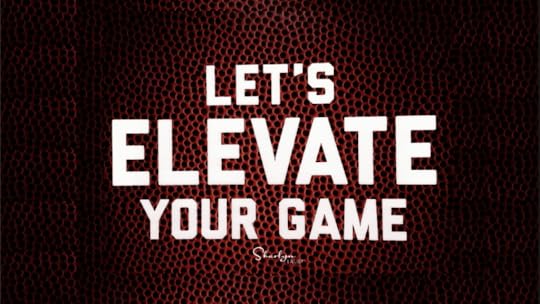
Estimated reading time: 3 minutes
I recently published an article on the two different types of negotiation – positional and principled. If you haven’t seen it, I hope you’ll check it out. Within both types, there are steps … and they’re basically the same.
Assessment. The first step is to understand the negotiation. What type of negotiation do you anticipate? What are the issues that will be negotiated? What do you know about the organization / person you will be negotiating with? Trust me – the people and/or organizations that you will be negotiating with are doing the same about you and your organization. Preparation. In this step, take time to research the issues. If you need to have data to support your point of view, start gathering it. Also, use this time to identify not only the issues that you want to cover, but what you think the other parties will want. Try to put yourself in their position and anticipate their topics. Also, let me add here, if there are any dealbreakers, this is the time to identify them. Communication. During this step, you’ll be actively in the negotiation. You’ll talk about the things you want, and they’ll do the same. You’ll want to use all your communication skills including empathetic listening and non-verbal cues. Building trust is an important part of the process if you want to reach a solution. And in the previous step I mentioned dealbreakers, this might be the time to express what those dealbreakers are. Not because you want to play hardball, but because holding back that information could damage trust. Proposal / Solution. Speaking of solutions, this is where proposals are exchanged, and solutions are designed. It’s possible that your initial proposal will need to be revised a little. I like to think of this step like problem solving. During the communication step, the situation / problem has been identified. In this step, both parties realize their common goals and work toward a solution. Agreement / Commitment. Once a solution is identified, it’s important for both parties to agree and commit to it. Like in consensus building, you don’t have to love it or even like it … but you do need to be able to live with it. We rarely get everything we want in a negotiation, but we do need to support the result.We negotiate all the time in our professional lives. Right now, many organizations are in what I call “budget season”, where we have to negotiate things like how much headcount we will have next year. Or how much money will be in the training budget.
Another common negotiating scenario is when we’re looking for a new opportunity. Job offer negotiations are regular events. Don’t assume that every job candidate just wants “more money”. There could be other things like more vacation or guaranteed professional development. Whether you’re the person extending the offer or the candidate, you need to be prepared for a negotiation.
Oh, and one more thing. Once the process is completed, take a moment to do a quick two-question debrief with yourself. 1) What went well? And 2) what would you do differently next time? Negotiating is a lot harder than it sounds. The good news is that the debriefs will help you get better at it.
Image captured by Sharlyn Lauby after speaking at the HR Technology Conference in Las Vegas, NV
The post 5 Steps to Better Negotiating Today appeared first on hr bartender.
August 21, 2025
Know Exactly What a Buzzword Means Before Using It

Estimated reading time: 4 minutes
We probably all know that a buzzword is a word or phrase that has become fashionable by being used a lot, especially in the media. An example of a buzzword is “quiet quitting”, which I’m seeing in the news again and honestly, I’m not really sure why. But that’s not the point of today’s article.
Quiet quitting is a great example of a buzzword that people use but they don’t always completely understand what it means. So, they often use it the wrong context, which can create challenges in the workplace. I came across a press release from McLean & Company talking about buzzwords and the impact they can have when used incorrectly.
I get it. We all want to sound cool and know all the latest cool words and phrases. But when we use buzzwords incorrectly, we’re creating communication challenges. Especially when we use a buzzword in proposing a solution to a problem. For instance, if someone says in a meeting, “I know exactly what we need to do to fix our ‘grumpy staying’ problem.” Does everyone know what “grumpy staying” means? If they don’t, are they going to speak up?
McLean’s press release reminded me of the business literacy conversation we’ve had in the past. It can be very tempting to share an article on social media because everyone else is sharing it. But do we know if it’s accurate? Viral does not necessarily mean true. Maybe we need to apply the same business literacy philosophy to buzzwords.
When we hear a buzzword, do the homework to find out what it means. Often buzzwords represent situations. For example, there’s a term called “quiet firing” or “soft firing” that’s defined as when an employer starts to make an employee’s job unpleasant hoping they’ll get the hint and quit. I’m not a lawyer but I could see how It could be considered very similar to the U.S. Department of Labor’s definition of “constructive discharge”.
Decide if you want to use the term. There’s no rule that says you have to use the latest buzzwords. In fact, there could be buzzwords you want to intentionally avoid. Personally, I’m not a fan of “quiet firing” or “soft firing”. If the employer has an employee situation they need to handle … well, handle it. Making an employee miserable so they quit is just petty. Plus, all the other employees will see it, making the work environment even worse.
Figure out how to ask for definition. Everyone will have to find their own way of saying this, but when someone else uses a buzzword, find a way to ask them to define it. Maybe say, “Hey for everyone’s benefit, can you tell us what ‘lazy girl jobs’ means?” I guarantee that someone in the room is relieved that they don’t have to tell anyone that they didn’t know the definition.
Many organizations are going into planning and budgeting season. It might be very tempting to use buzzwords to pitch goals and present solutions to sound like the organization is very modern. If the organization isn’t on the same page about what these words mean, they could be approving resources (i.e., money, headcount, equipment, etc.) to solve something that they know nothing about. That’s a very expensive way to learn what “AI-First Mindset” and/or “quiet cutting” means.
I’m not saying that buzzwords aren’t important. Business buzzwords like quick win, holistic, and touchpoint could be very valuable in conveying a message. But even with these words and terms, knowing what they mean and the right way to use them showcases your strong communication skills.
Image captured by Sharlyn Lauby while exploring the Wynwood Art District in Miami, FL
The post Know Exactly What a Buzzword Means Before Using It appeared first on hr bartender.
August 19, 2025
Organizations: Let Employees Know Your Business Goals
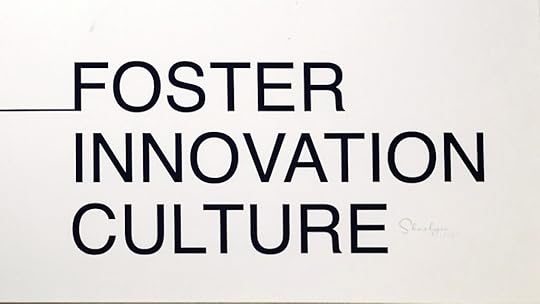
Estimated reading time: 3 minutes
During a training session years ago, a facilitator asked our group to do an activity called “make as much money as you can”. We weren’t provided with a lot of instruction. The facilitator divided us into smaller groups and simply said, “Come up with a plan to make as much money as you can.”. After spending some time working on it, each group presented their plan. Here’s what we discovered during our debrief.
For some groups, “you” meant a small group of people. Others took “you” to mean their department or division. And others interpreted “you” to mean the entire company.When it came to “money”, some groups thought that meant top line revenue so they could add more employee benefits or possibly increase customer service. Others thought it meant bottom line profit.While I don’t remember all the specifics about conducting the activity, the takeaway still stays with me. Organizations can’t just assume that every employee knows their business goals. Even in very entrepreneurial companies where “making money” is a top priority, how the organization makes money needs to be clarified. As we’re approaching year-end and organizations are thinking about their goals for next year, here are some keywords that might help bring clarity in designing and communicating business goals.
RESULTS: What are the business goals that the company wants to achieve? And what drives those goals? For instance, if the company wants to improve sales, by how much? What are the things that drive sales? Maybe the organization needs to get some feedback from the sales team on what they’re hearing in conversations with customers.
ROADMAP: What is the process and timeline for getting where the organization is right now to where they want to be? This can be discussed in a traditional gap analysis format. Organizations should be specific about the steps they need to take. It’s possible that the company will need to invest in training or equipment in order to accomplish a step.
RESPONSIBILITIES: Who is accountable for each step in the process? What’s their role? We’ve talked before about the RACI model which stands for responsible, accountable, consult, and inform. When trying to accomplish a goal, individuals need to know who is doing what. Organizations should not assume that someone just knows that they’re responsible for accomplishing something.
REPORTING: Lastly, how – and how often – will results be measured and reported? The organization needs to reach consensus on what success looks like. If we use our example goal of improving sales, then the organization should know how much they want to increase sales by … and when they expect to see that happen.
The purpose of these keywords is to ensure that goals are specific and that they are communicated to everyone. Keep in mind, that goals might change. It’s possible that someone will leave the company and responsibilities need to be reassigned. Or an external factor beyond anyone’s control will mean adjusting results – and subsequently how results are reported. Oh, and maybe a new technology will emerge that could streamline the roadmap. All possibilities that can impact goal success.
But if employees don’t understand the company’s business goals, then they’re left to figuring it out all on their own. Like the “make as much money as you can” activity I mentioned in the introduction. Maybe they’ll get it right. By developing specific goals and clearly communicating those goals, organizations don’t need to hope and wish … they will know employees understand what they need to do.
Image captured by Sharlyn Lauby while exploring the streets of Nashville, TN
The post Organizations: Let Employees Know Your Business Goals appeared first on hr bartender.
August 17, 2025
Use Technology to Improve Performance Gaps
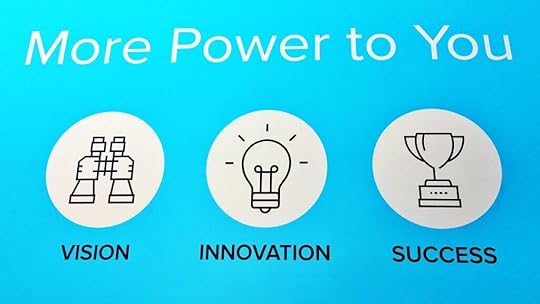
Estimated reading time: 3 minutes
With all the conversation about increased performance and efficiency, I think it only makes sense to talk about what organizations can do when there are performance gaps. And no, I’m not talking about disciplinary action. Sometimes individual and/or team performance might need training or an intervention.
The question becomes what’s the right intervention to close the performance gap. Start with finding out why the performance gap exists.
Let’s say the team (or a member of the team) isn’t doing a task to the company’s quality standard. It’s possible that the employee or team might need some refresher training. This could be done at a department meeting or in a one-on-one session. Not only should the proper process be explained but discuss why the process should not be deviated from. An employee might think they’re being more efficient by doing things a different way, when in fact … they’re not. Or, who knows, maybe they are!
Another example would be if performance is declining because the team is overworked … then the answer isn’t necessarily training. The team knows what to do. They just don’t have enough time to do it. And the answer isn’t work more hours. The organization might be able to improve performance by changing deliverable dates. Or maybe bringing in a freelancer or contractor to help with the workload.
Today, I wanted to focus on a solution that can improve performance gaps and that’s technology. Using the examples above, is it possible that employees don’t know how to use technology to its fullest capabilities? So a task that should take them 5 minutes is actually taking 15 because employees don’t know how to effectively use the technology. Organizations will want to ensure that employees have all the knowledge they need and if a training refresher is necessary … set one up. Depending on the topic, this could be a great lunch and learn opportunity.
The same is true for situations where employees have an overwhelming workload. Especially where things like email are concerned. I know there are times when we look at our email inbox and say, “I will never get through all of this.” But the reality is that organizations often give employees totally unrealistic expectations when it comes to answering emails.
I remember years ago doing a focus group for a client where we talked about email response times. One person said emails should be answered within 2 days. Another person said one day. And one person said 10 minutes. I’m not joking … that’s a really wide range. My point being that technology can help us prioritize our work. Provided that we understand the organization’s priorities.
Technology is a great thing. It helps us keep our work organized, make us perform faster, and deliver a quality result. Now with artificial intelligence tools, technology might be able to help us search for information faster, edit documents better, and even create automation routines. All these things can help employees perform at a higher level if they are used properly.
Using technology to improve performance does mean that organizations need to set performance expectations, provide employees with the proper training and tools, and coach employees along the way. Organizations want high performing employees and teams. Give people what they need to be successful.
Image captured by Sharlyn Lauby after speaking at the HR Technology Conference in Las Vegas, NV
The post Use Technology to Improve Performance Gaps appeared first on hr bartender.
August 12, 2025
Anti-Harassment Programs Create Safer Workplaces

Estimated reading time: 5 minutes
(Editor’s Note: Today’s article is brought to you by our friends at Poster Guard® Compliance Protection Service, a division of HRdirect , and the leading labor law poster service that gets your business up to date with all required federal, state and local labor law postings, and then keeps it that way — for an entire year. Enjoy the article!)
Organizations must create safe work environments for their employees. I know this might sound obvious, but over 85% of people who experience sexual harassment never file a formal charge and approximately 70% never complain internally according to the National Sexual Violence Resource Center (NSVRC).
In addition, a 2020 report by the U.S. Equal Employment Opportunity Commission (EEOC) shows that 55.8% of retaliation complaints occur after reporting a sexual harassment claim. I don’t have to explain that this doesn’t contribute to the goal of creating a safe work environment for employees.
The question becomes what organizations can do to change it. And it starts with having a program to educate employees. But before I get into some specifics, there are three things I want to address about building a good foundation for anti-harassment programs.
Management teams need to be onboard with the program. And when I say management team, I mean the entire management team. There should be zero tolerance for harassment and zero tolerance for retaliation. Period.Yes, harassment is a legal matter. But that doesn’t mean the goal for harassment prevention training is to teach people the law. Be strategic in citing the law so it has the proper impact. While anti-harassment programs are a part of the organization’s overall compliance strategy, it could be helpful not to treat it like a “do this and check off a box” activity. This is about employees truly understanding the information.Okay, now that we’ve talked about how to build a good foundation, let’s discuss a couple of specific things that organizations can do to educate employees and maintain compliance. Our friends at Poster Guard and HRdirect offer several different anti-harassment resources to suit your operational needs. Here’s a quick overview of what they provide:
Anti-Harassment Posters: Poster Guard offers posters that state the organization is “harassment free”, “prohibits sexual harassment”, and even one that talks about “political harassment”. These posters can be displayed in places where candidates see them during the hiring process and know the organization’s position. They can also be displayed in breakrooms as a reminder to employees about the company’s position and what to do if they have concerns.
Employee and Manager Training: Some employers erroneously believe they only need to provide anti-harassment training to employees in states and local jurisdictions that have statutes requiring it. Just as a reminder, there are currently several geographic areas that have specific training requirements (i.e., CA, CT, DE, IL, ME, NY, Chicago, and New York City). In addition to employee training, many organizations offer an additional session for managers, who might have an employee express concern directly to them.

While there are states and cities with statutes requiring anti-harassment training, other federal, state, and local laws, along with court decisions have made it clear that employers should provide anti-harassment training to all employees (in all states). Organizations will want to keep in mind if they have a remote workforce, that they want to make sure employees receive the right training.
HRdirect’s anti-harassment training can be delivered in-person, online, and self-paced. Personally, I think this is practical and gives employees the best learning environment. Organizations can offer options and continue to make providing employees with a safe work environment a priority. The sessions also include quiz questions to confirm the transfer of knowledge. This allows the organization to hold employees accountable for the content.
What I really like about Poster Guard and HRdirect’s anti-harassment resources is the level of personalization it brings to the organization. We can make sure we’re delivering the right content. To everyone in the organization. In multiple formats so it stays engaging. With quiz questions to reinforce learning. This keeps the organization from falling behind on compliance because they “don’t have enough people for an in-person training class”.
Organizations will want to make sure that all employees know what to do. An organization with a small management team might not have the resources to design and deliver their own training programs. Purchasing outside resources could be a great option.
Anti-harassment programs are an important topic for organizations and individuals. Give it the respect and attention it deserves. I hope you’ll check out Poster Guard’s anti-harassment poster offerings as well as HRdirect’s anti-harassment training. You can also download this eGuide on “Recognizing and Preventing Harassment: 5 Scenarios to Test Your Awareness”. This might be a great conversation starter within the organization about what harassment is and the risk it could pose to the organization.
The post Anti-Harassment Programs Create Safer Workplaces appeared first on hr bartender.
August 10, 2025
Building Resilience Is a Continuous Process
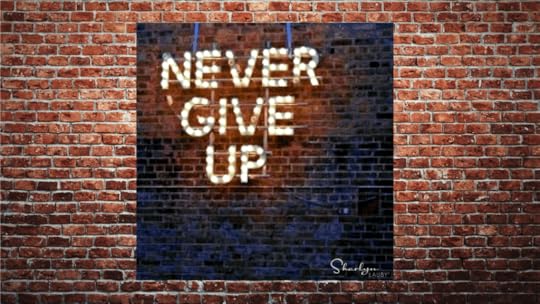
Estimated reading time: 4 minutes
Resilience is defined as “the ability to recover or adjust from challenges or change”. Last year, I talked with Simon T. Bailey about resilience and his book “Resilience@Work: How to Coach Yourself into a Thriving Future”.
I was reminded about Simon and our conversation about resilience after seeing a recent press release from the research firm McClean & Company on the topic of building a resilient HR organization. According to their 2025 HR Trends report 36% of human resources professionals are experiencing higher stress levels and 68% said they face challenges that prevent them from meeting key priorities.
As we’re approaching the end of the year, this could be a good time for HR teams to conduct some form of self-assessment on how resilient they feel they are and discuss strategies for the future. McLean & Company does offer tools for HR departments to use in developing resilience techniques.
Personally, one of the activities that I like to use to build my resilience is a three-question survey.
Describe a time when you felt you were your most productive. And think about all the things that helped achieve it. For example, what was your work environment like, did you have a specific schedule, were you using a particular software or technology, what was your boss like, etc. Even include your personal life. Were there things about your home life that helped you be more productive at work?Next, describe a time when you felt you were your least productive. And think about all the things that contributed to it. Don’t just say, it was the opposite of your most productive answer. List those things that kept you from doing your best work. If you need to include aspects of your personal life, then consider that as well. Now, evaluate where you are right now. Create a scale with most productive on one end and least productive on the other. Plot where you are right now. Think about what it would take to move you closer to your most productive. And think about how you might share this information with your manager. If you’re a manager, is it possible to have your employees do this activity and then ask them to share with you what it would take to help them be more productive.For me, resilience is about understanding the conditions to do your best work. Of course, that doesn’t mean that every day will be perfect. Change is always happening. But if we don’t identify those things that help us do our best work, then will we be able to effectively adjust when changes happen?
An example for me was when I started consulting and working from home. I tried to duplicate exactly what I did when it went into the office. And I made myself miserable. So, I spent time thinking about what I liked about working in the office … and tried to create those things. I also spent time thinking about what I didn’t care for … and tried to minimize those. That activity helped me create the work environment that allowed me to do my best work. Over the years, changes in equipment and technology have allowed me to become even more productive.
Building resilience isn’t a one and done activity. Challenges and changes will always be around us. By understanding the conditions, we need to do our best work, we can put ourselves in a position to create that environment. Not just on an individual level. Organizations can use this feedback to create teams that will be resilient as well.
Image captured by Sharlyn Lauby while exploring the streets of London, England
The post Building Resilience Is a Continuous Process appeared first on hr bartender.
August 7, 2025
Make Sure Training Materials are Valuable

Estimated reading time: 4 minutes
I recently published an article on “How to Create a Training Session Quickly”. If you haven’t seen it, I hope you’ll check it out. One of the things I didn’t talk about in that article was training materials.
Good learning sessions provide participants with training materials. One of the main reasons for doing so is to give participants a post-training reference guide of sorts. After training, employees can refer to the materials and their notes if they have questions. This is particularly helpful if the training session involves a lot of details, like how to operate a piece of equipment.
Designing learning materials can be challenging because people might feel that they need to design something fancy. Not true. The goal of training materials is to be useful. And fancy doesn’t always equate with useful.
One thing I’ve seen is the use of a PowerPoint slide deck as the participant guide. I’m not against using a PowerPoint deck as a participant workbook, if it makes sense (and it’s useful). Maybe instead of printing the entire deck, take the most pertinent slides and create a smaller but still valuable document. That could reduce printing costs and still give employees helpful training materials.
If organizations don’t want to change their existing participant workbooks, then make sure employees can always access them. Training materials don’t have to be secretive. Put them in a library (whether hardcopy or online) that employees can access any time they need it.
Another way to provide participants with training materials that doesn’t involve printing a bunch of paper is to create job aids. I’ve attended a couple of training sessions that involved a process – like how to plan an employee one-on-one meeting – where we were provided with a template to use in planning the meeting. In fact, one session provided a notepad with the meeting steps on it so participants would always have them handy. They also provided an index size laminated card that participants could keep in their planner or portfolio. That way if they were remote and needed the steps, the card was right there. The takeaway from the training session was to remember the steps. And the training materials supported that.
A second form of job aid is a flow chart. If the training session is focused on a process, like the company’s disciplinary procedure. And the training session is to provide managers with guidance on when they should initiate disciplinary action and at what point they need to get HR involved. This is a common training topic. Maybe at the end, giving managers a flow chart would help them manage the process well. In fact, at the bottom of the flow chart, there could be a legend or key with icons to remind managers about where to go for more information, etc.
My point is that training materials do not need to simply be a printed deck. And they don’t need to be designed by a professional artist. Training materials should be useful. They should help participants remember the learning content. They should be something that participants can use after the training session is over. If you’re trying to figure out if your training materials are perceived as being valuable, ask people. You could do this during a pilot session or ask a specific question on a post-training survey.
Organizations continue to be focused on getting value for everything they do. This has always been true and it’s even more so today. Now is a perfect time to ensure that what happens during training is adopted in the operation. Useful training materials could be a great step to help do that.
Image captured by Sharlyn Lauby at the 34th Street graffiti wall in Gainesville, FL
The post Make Sure Training Materials are Valuable appeared first on hr bartender.
August 5, 2025
Organizations Should Hold People Accountable
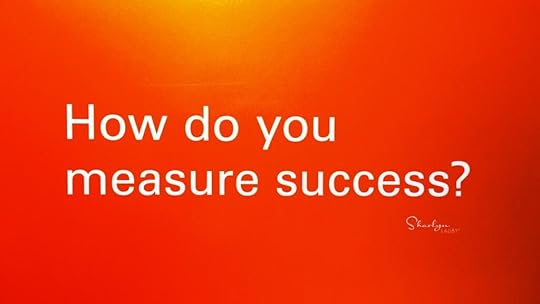
Estimated reading time: 3 minutes
I saw a comment the other day that I haven’t been able to stop thinking about. It said that human resources is no longer about managing people. It’s about leading a dynamic system that integrates talent, technology, artificial intelligence, and data. I don’t know about anyone else, but that’s not an HR shift to me. Human resources has always been about aligning talent, technology, and data.
I know this might sound like venting … and maybe it is. But I do wonder if one of the reasons HR professionals often feel like they’re getting the brunt of negative talk is because of statements like this. Ones that don’t hold the rest of the organization accountable.
Yes, HR manages people. In their department. The accounting department should be managing their employees, and the sales department should be managing their employees. You get the point. HR is not solely responsible for managing the entire workforce.
And yes, HR plays a role in aligning talent. We’re a part of workforce planning, recruiting, training, and performance management. So are the operational managers. HR doesn’t recruit the workforce in a vacuum. They don’t train in silos. And they’re not directly responsible for the performance management of the entire workforce. In fact, in addition to HR and department managers, employees play a role in the employee experience life cycle.
Today’s organizations rely on technology to operate. Technology is constantly evolving, and new technologies are being introduced all the time. One of those new technologies is artificial intelligence (AI). AI is by definition a technology. Organizations should include AI in their technology strategy. Personally, I would be concerned if the organization doesn’t recognize AI as part of their technology strategy because separating the two might not yield the best desired result.
Lastly, data is a part of everything we do in the business world. We use it in every department to track progress, make decisions, and evaluate results. Granted, what gets tracked might vary by department and function, but it’s all data. We need to know what data to collect, how to analyze it, and how to present it to others.
So, what I’m saying is that HR is about leading a dynamic system that integrates talent, technology, and data. It’s true. But it’s also true of every other manager in the organization – accounting, sales, operations, etc.. And frankly that’s nothing new. I’ve been in HR for a long time and that’s always been true.
What could be new is that organizations need to start holding people accountable for actually doing these things. And business leaders need to hold themselves accountable for doing these things. In all fairness, maybe that’s what the original comment was intended to say. Business leaders need to be held accountable for managing a dynamic system that integrates talent, technology, and data. Now that makes sense to me.
Hire the right people. (TALENT)Give them the right tools. (TECHNOLOGY)Coach them for high performance. (DATA)The business world is changing all the time. But there are some aspects that remain the same. We need to be accountable for delivering those results.
Image captured by Sharlyn Lauby while exploring the streets of New Delhi, India
The post Organizations Should Hold People Accountable appeared first on hr bartender.
August 3, 2025
Artificial Intelligence Can’t Fix the Work Environment
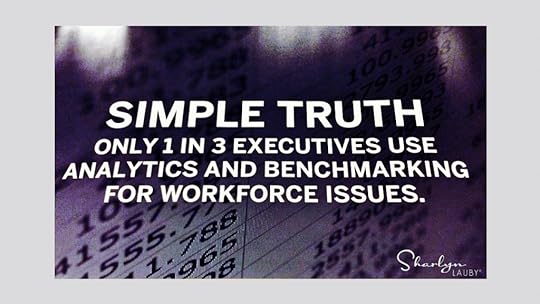
Estimated reading time: 3 minutes
I recently came across a work trend special report from Microsoft that was talking about the emergence of artificial intelligence (AI). I’m not going to lie, the report is trying to showcase what Microsoft AI tools can do for organizations. But the report mentioned another takeaway that’s worth thinking about – which is organizations shouldn’t expect AI to fix their work environment.
It totally makes sense. Artificial intelligence tools learn from the existing structure. So, if the existing structure is flawed or not operating at peak effectiveness, then that’s the foundation that AI will learn from. It’s kinda like having the employee who doesn’t follow any of the rules train the new employee. Does the organization feel confident that the new employee will learn the company standard (or the short cuts)?
This is where the Microsoft report got interesting because they shared some statistics about what they’ve termed the “infinite workday”. Here are just a few that caught my eye:
Mass emails with 20+ recipients are up 7% in the past year, while one-on-one threads are on the down 5%.The average time between interruptions by a meeting, email, or message during work hours is 2 minutes. 57% of meetings are ad hoc without a calendar invite. 29% of employees check their email after 10p and 16% of meetings are scheduled in the evenings.What struck me about these statistics (and there are many more in the report) is that organizations appear to be struggling with communication. People are sending mass emails because they don’t have time to figure out who needs the information so let’s just send it to everyone. Meeting leaders have an issue they need to communicate so let’s do it now while it’s top of mind because they don’t want to forget – even if it means during the evening hours.
So, if you’re an organization thinking about implementing AI tools, it’s important to do an internal assessment. Are you ready for AI? Not just do you have a strategy and policy in place, while those are important. But rather, is the organization’s current processes working well (i.e., like communication). Because AI tools might just amplify the organization’s weaknesses.
And if the organization isn’t currently thinking about AI, maybe this is a good reminder to address process flaws in a timely fashion. Because if employees see they will not be held accountable, then what happens? I’m not suggesting that every employee will start undermining the company. In fact, some employees might not realize they are doing something wrong. Holding people accountable helps the employee and the organization be successful.
After thinking about this report for a few days, my final takeaway was this: quick fixes don’t always yield positive results. Technology is wonderful but you have to put in the work – research the product, implement it well, get trained on how to use it, and monitor results.
I recently published an article on employee coaching. The same principles apply. We can’t simply just tell an employee one time to do something and expect perfect results. We have to set expectations, provide training, coach the employee, and recognize good work.
Organizations that want high performance (and let’s face it, they all do) need to do the prework so their employees and technology solutions can deliver for them.
Image captured by Sharlyn Lauby who wondered if it also includes artificial intelligence.
The post Artificial Intelligence Can’t Fix the Work Environment appeared first on hr bartender.
Sharlyn J. Lauby's Blog
- Sharlyn J. Lauby's profile
- 10 followers



